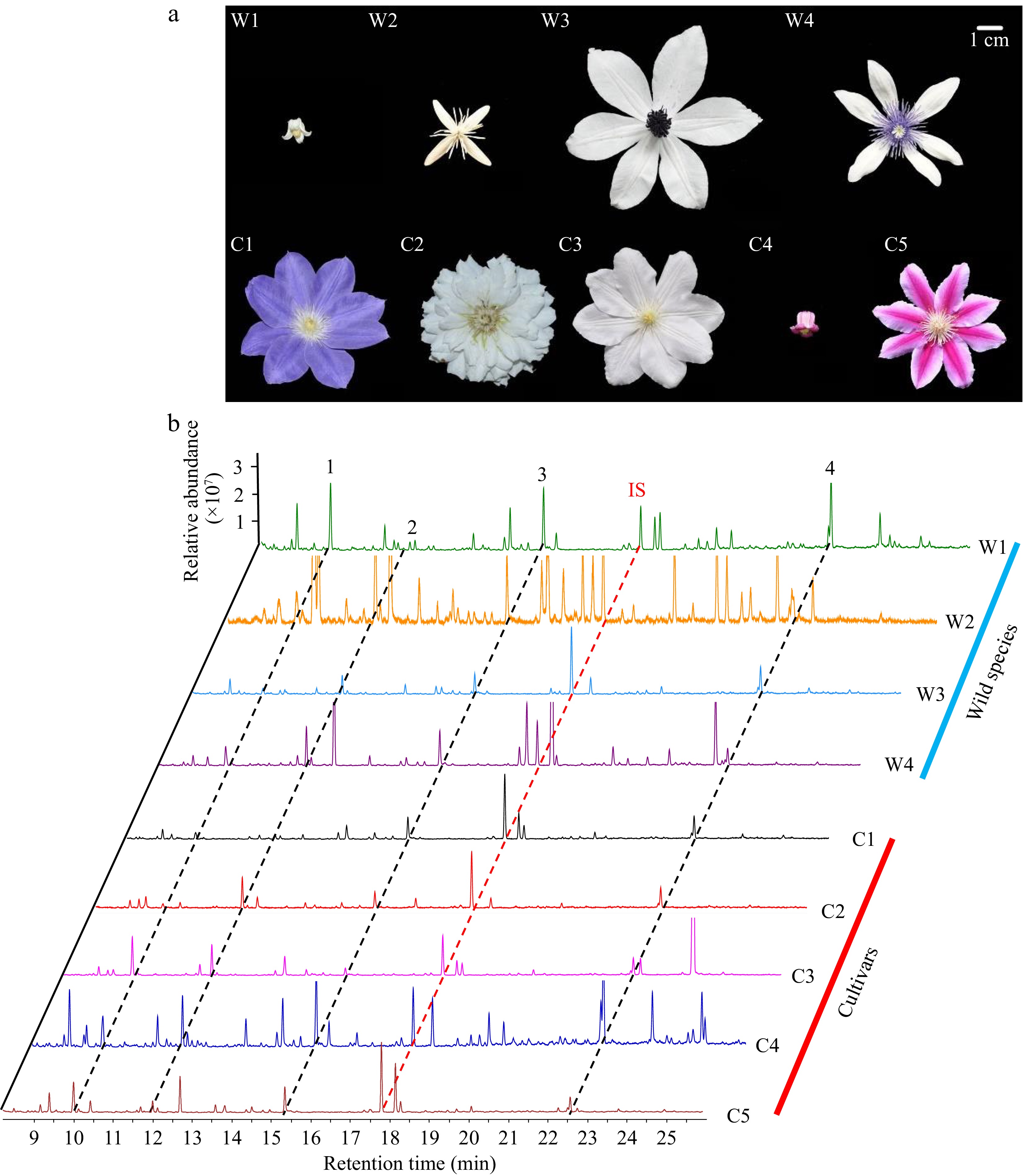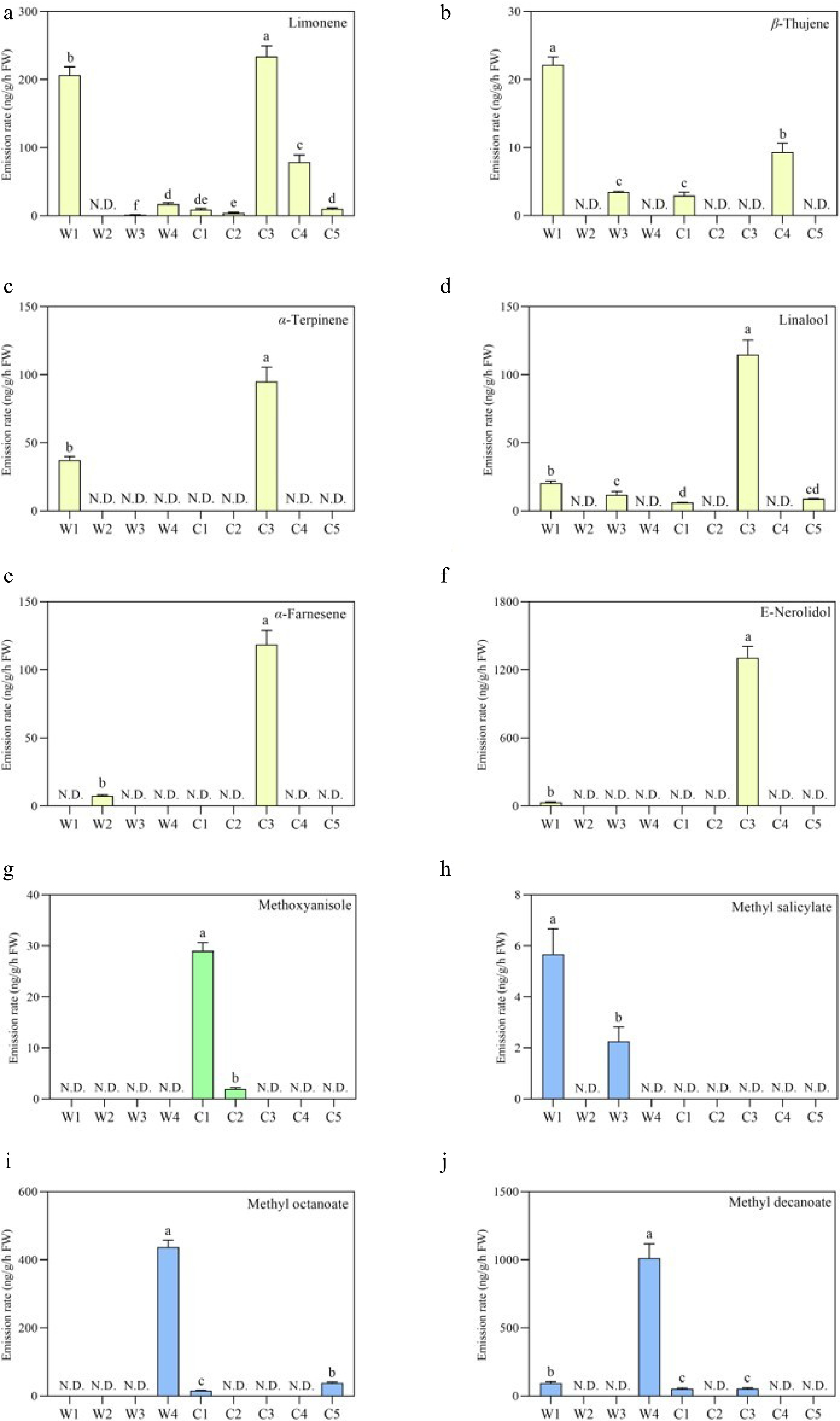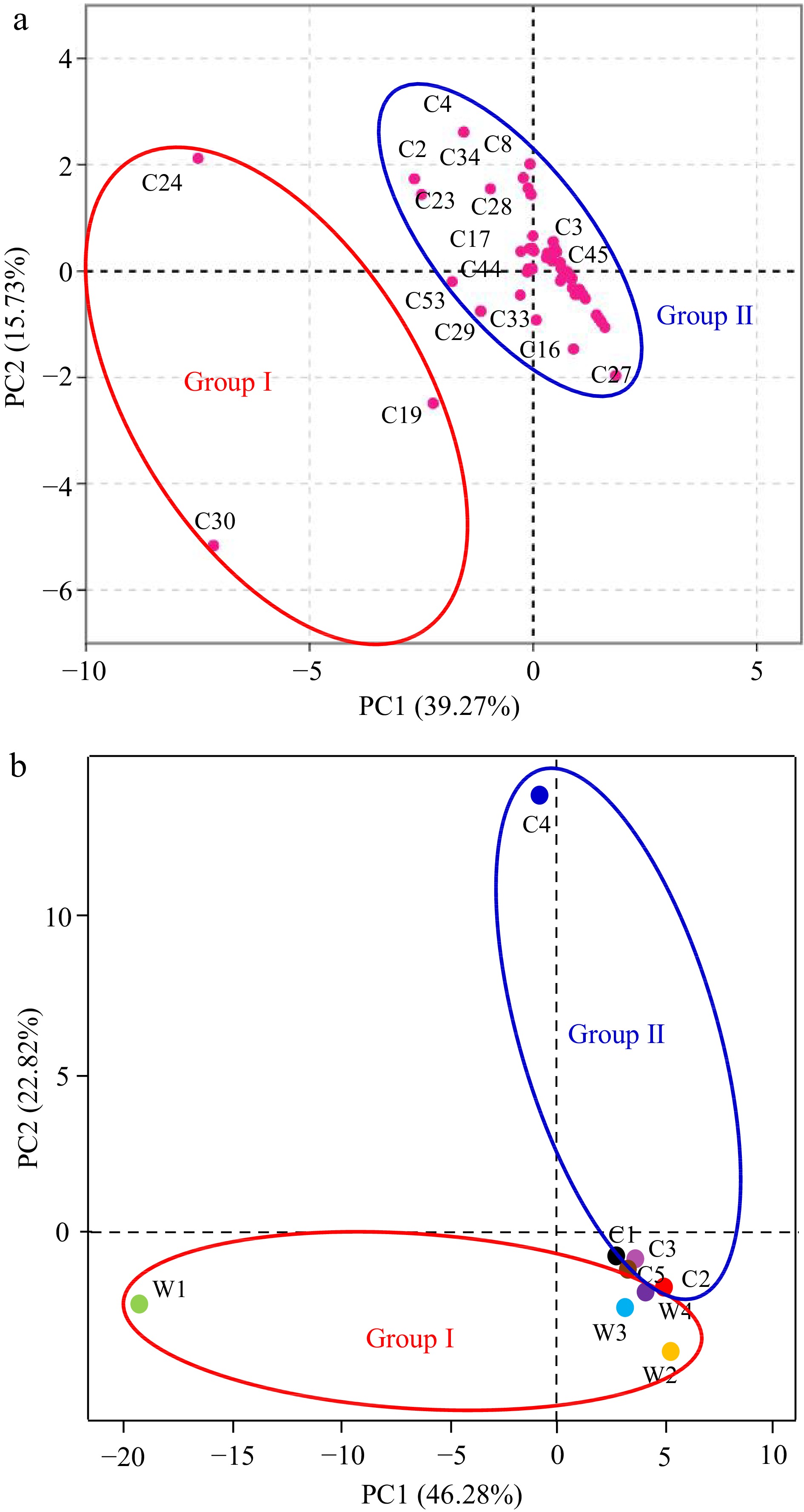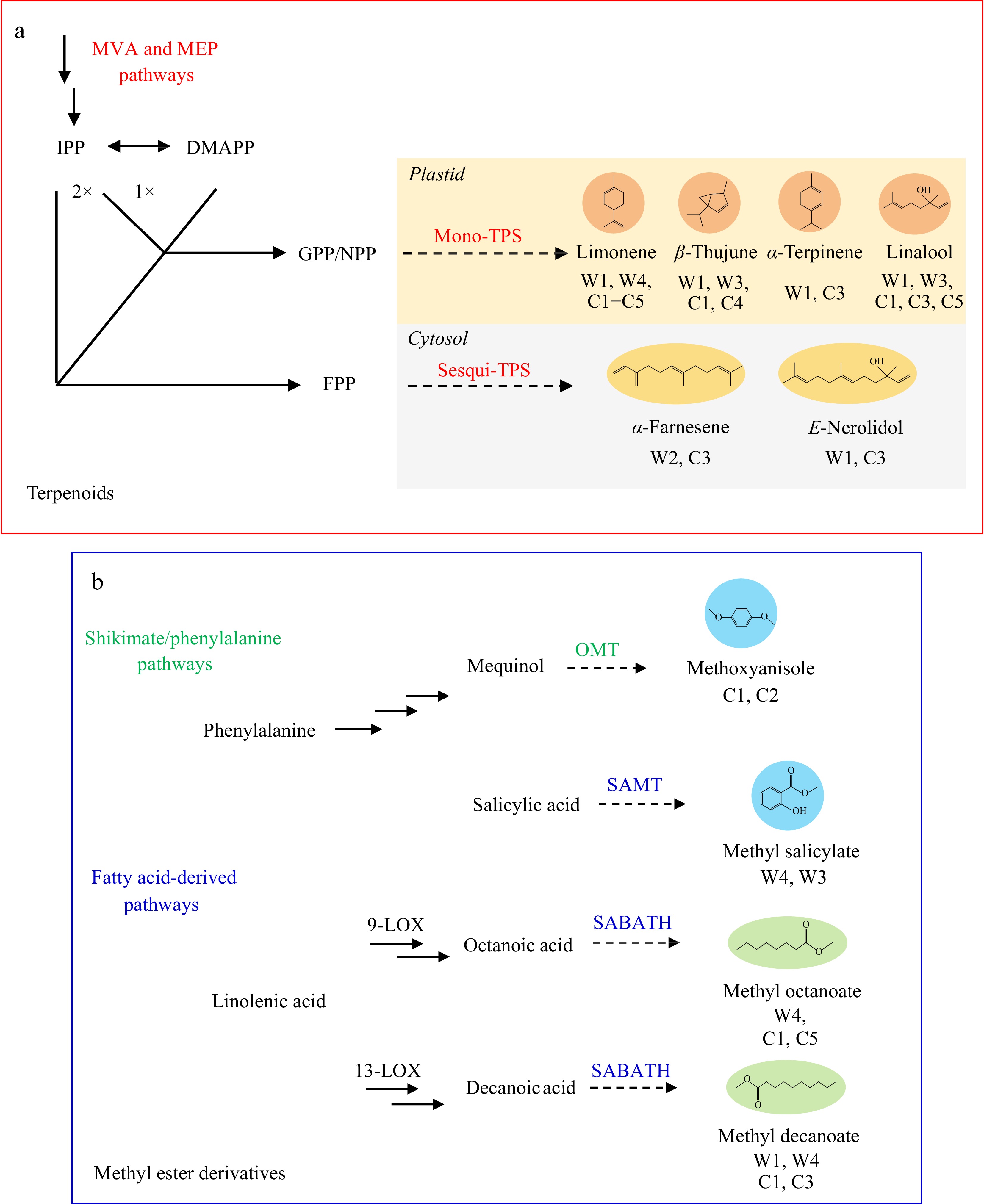-

Figure 1.
(a) Morphology of the selected Clematis wild species and cultivars flowers during the full-openness stage. (b) The corresponding gas chromatography mass spectrometry of floral volatiles of Clematis species/cultivars. W1−W4 indicates the four wild species, and C1−C5 represents the five cultivars. The abbreviations of sample names and their classification are listed in Table 1. All peaks were identified by reference to the NIST 2017 library. IS means the internal standard. The peaks of representative volatile compounds were displayed as benzyl alcohol (1), linalool (2), 2-phenoxyethanol (3), α-farnesene (4).
-

Figure 2.
Variation of floral volatile emissions among the Clematis wild species and cultivars. (a) Total emission rate (ng/g/h) of the floral scent from the nine samples. (b) Relative percentage (%) of terpenoids, benzenoids, fatty acid derivatives and N-containing compounds. (c)−(f) The corresponding emission rate of the four categories of volatile compounds. Data are presented as the mean value with standard error (mean ± SEM). The different letters above the columns represent the significance among the average emission rates in different groups according to ANOVA analysis (p < 0.05).
-

Figure 3.
Comparison of the major volatile components released from the Clematis wild species and cultivars flowers. (a)−(f) The emission rate (ng/g/h) of monoterpenoids and sesquiterpenoids, including limonene, β-thujune, α-terpinene, linalool, α-farnesene and E-nerolidol. (g)−(j) The emission rate (ng/g/h) of the methyl esters of benzenoids and fatty acid derivatives, including methoxyanisole, methyl salicylate, methyl octanoate and methyl decanoate. Data are presented as the mean value with standard error (mean ± SEM). The different letters in the column represent the significance among the average amount in different groups according to ANOVA analysis (p < 0.05).
-

Figure 4.
Clustering heatmap of the emission rate of individual components distinguished with four categories of floral volatiles. The color scale ranging from red to green represents the relevant value of the emission rate of volatiles, respectively. All values of volatiles were normalized by log2 transformation. The red squares indicate the major components of each group of floral volatiles.
-

Figure 5.
Principal component analysis (PCA) of the emission rate of major volatile compounds. (a) Eigenvector loading plot of 56 major volatiles corresponding to more than 1% of total amount. (b) Principal component score plot of the emission rate in the nine samples. The distinguished compounds were designated with D-limonene (C2), α-terpinene (C3), linalool (C4), α-farnesene (C8), 2-nonanol (C16), nonanal (C17), octanoic acid, methyl ester (C19), ethanol, 1-(2-butoxyethoxy)- (C23), 2-phenoxyethanol (C24), cyclopentane, 1-acetyl-1, 2-epoxy- (C27), 2-methylheptanoic acid (C28), undecanoic acid, methyl ester (C29), decanoic acid, methyl ester (C30), trans-β-ionone (C33), pentadecane (C34), benzene, 1, 4-dimethoxy- (C44), methyl salicylate (C45), 1H-pyrazole, 4,5-dihydro-5-methyl- (C53), respectively.
-

Figure 6.
Summary diagram of putative biosynthetic pathways of major floral volatiles among the intergeneric comparison. The proposed biosynthetic pathway of terpenoids and methyl esters emitted from Clematis flowers according to the identified volatile profiling. The dotted lines with arrows represent the verified the catalytic steps of terpenoids and methyl ester derivatives. (a) The corresponding prenyl-diphosphate substrates (IPP, isopentenyl diphosphate; DMAPP, dimethylallyl diphosphate; GPP, geranyl diphosphate; FPP, farnesyl diphosphate) and the mono- or sesquiterpenoid products are marked with black, respectively. (b) The underlying methyl ester biosynthesis pathways involved in the shikimate/phenylalanine and the fatty acid-derived volatiles are also indicated, respectively.
-
Code Accession Classification Corolla
typesCollection
localityAroma
intensityAbbreviation 1 C. henryi Wild species (WS) Bell-shaped Wenzhou, Zhejiang, China Medium W1 2 C. finetiana Wild species spreading Wenzhou, Zhejiang, China Strong W2 3 C. courtoisii Wild species spreading Hangzhou, Zhejiang, China Medium W3 4 C. owatarii Wild species spreading Pingdong, Taiwan, China Weak W4 5 C. florida 'Diana's Delight' Cultivars (CS) spreading England Weak C1 6 C. florida 'Duchess of Edinburgh' Cultivars double petals Poland Weak C2 7 C. florida 'Marie Boisselot' Cultivars spreading French Strong C3 8 C. viorna 'Jade' Cultivars Bell-shaped Japan Medium C4 9 C. florida 'Bees Jubilee' Cultivars spreading Poland Weak C5 Table 1.
Information and classification of the selected Clematis wild species and their cultivars.
Figures
(6)
Tables
(1)